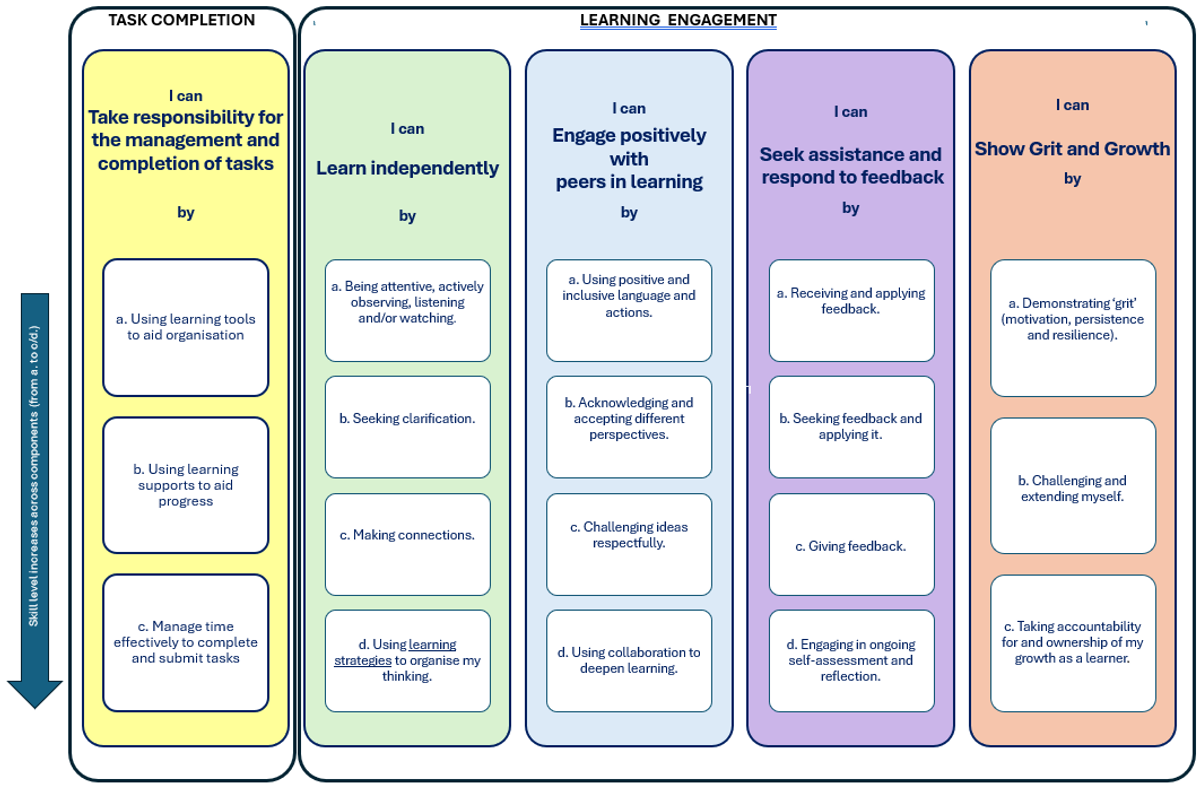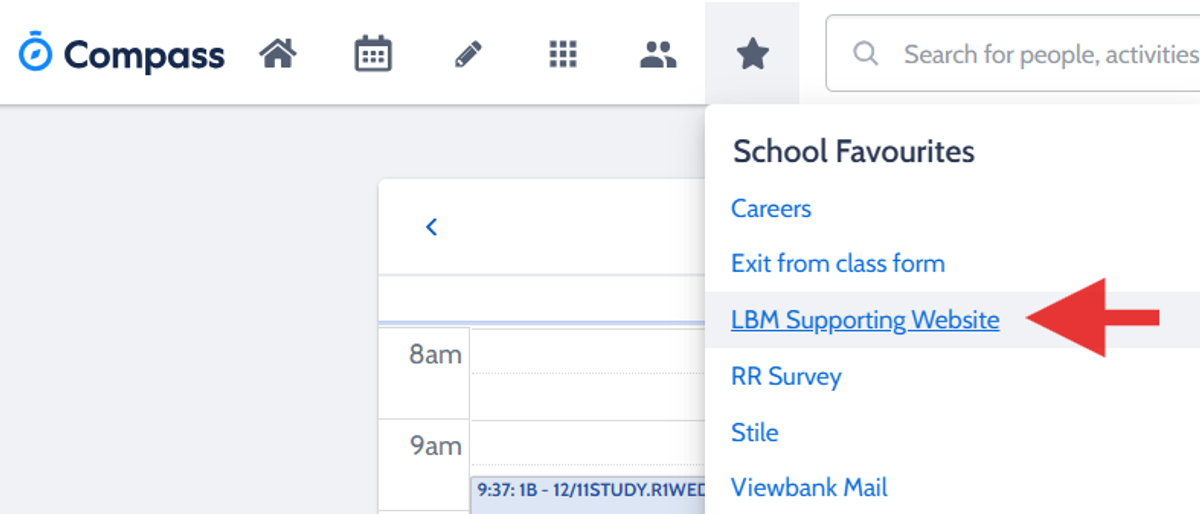Explaining our Learning Behaviours Continuum.

Learning behaviours are transferable, lifelong skills that are utilised by everyone to be successful
The Learning Behaviour Continuum has been updated in 2025! Check out this video for an overview: https://www.youtube.com/watch?v=UIOodoSEzP8-
Learning Behaviour Continuum Overview
Students and staff have co-created the Learning Behaviour continuum to support everyone to grow their skills to engage positively in their learning at school, outside of school and beyond. Learning behaviours are transferable, lifelong skills that are utilised by everyone to be successful, whatever role that they find themselves doing.
At multiple points during the year, students reflect on their learning behaviours, evaluate themselves against the continuum and set actionable next steps. Teachers also make judgements on interim and semester reports. Teachers support students in class to develop their learning behaviours.
Our focus this time: Learning independently
These behaviours describe what you do when you`re taking in information or ideas and making sense of them by thinking about how they build on what you already know or can do. Beyond school, this provides you with the metacognitive tools and strategies to adapt to problems, small and big, when you encounter them and need to respond.
Metacognition is one of the biggest words we`ve used in this series so far. It refers to being aware of what it is that you`re experiencing, for example, are you being challenged and finding it difficult right now, or not being challenged enough, or recognising when you`re stuck, and in each case, being able to respond appropriately. It involves monitoring and evaluating your own learning experiences so that you can take proactive next steps. Metacognition empowers students to become more active and strategic learners.
Specifically, this time, we`re focusing on the ‘micro-behaviour’ a. Being attentive, actively observing, listening and/or watching
AT SCHOOL, active listening means you to listen attentively, without distraction, to a speaker and understand what they’re saying. You`re then able respond and reflect on what’s being said, and retain the information for later. In a one-on-one conversation, this keeps both listener and speaker actively engaged in the conversation. In a classroom discussion with multiple participants, active listeners are able to keep track of what points have been made and build on the discussion to deepen understanding.
In the classroom, active listeners take in what a speaker is saying (not just what you want to hear or think you hear). Active speakers are able to remember, reflect and respond to what the speaker has said. They are able to keep an open mind when taking in information. They ask clarifying questions to make sure they understand.
BEYOND SCHOOL, being an active listener means that you are able to really hear what another person is saying and understand where they`re coming from. This transferable, lifelong skill decreases the potential issue of misunderstanding and jumping to conclusions - instead, you ask questions and are able to recall what has been said.
Here is what this micro-behaviour can look like at each level of the Positive Learning Behaviour Continuum.
Students can access additional supporting resources on the ‘LBM Supporting website*’, accessible via the Compass -School Favourites menu (Star at top right). This resource allows students to pinpoint their current level and provides example strategies to grow this learning.
*This is an internal website – accessible to students and staff only – ask your young person to show you.
If you have any specific, additional examples of what this behaviour can look like, or examples of where it is used, we would really like to hear from you. If you have any additional suggestions, questions or wonderings around this behaviour, or the Learning Behaviour Continuum itself, please email learningbehaviour@viewbank.vic.edu.au and we`ll be in touch.
John Patterson




